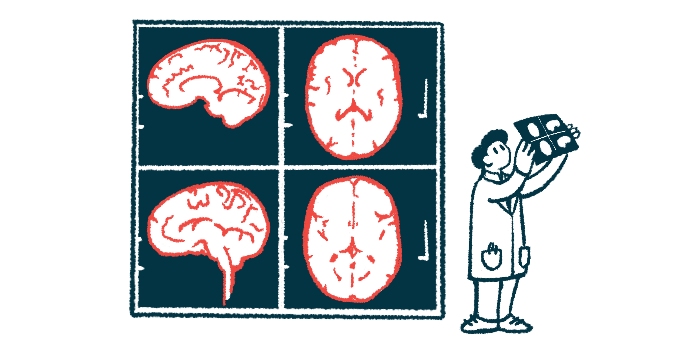Ultrasound-guided pituitary tumor surgery cures woman’s Cushing’s
Tumor was undetectable by MRI, according to case report
Written by |

Surgeons used ultrasound to successfully remove a pituitary tumor that was undetectable by MRI to cure a 55-year-old woman of Cushing’s disease, a case study reported.
The case “suggests the potential utility of ultrasound in MRI-negative Cushing’s disease,” the researchers wrote. “It raises the possibility that even small pituitary [tumors], undetectable on MRI, may be visualized using ultrasound.”
The case was described in the study, “Utility of intraoperative ultrasound in identifying pituitary adenoma hidden behind a cystic lesion in Cushing’s disease,” published in the Journal of Clinical Neuroscience.
Cushing’s disease is typically caused by a tumor, called adenoma, in the brain’s pituitary gland. These tumors produce and release high amounts of the signaling molecule adrenocorticotropic hormone, or ACTH, which in turn stimulates the adrenal glands, located atop the kidneys, to produce too much cortisol. Over time, high cortisol levels in the body give rise to Cushing’s disease symptoms.
Surgically removing the tumors, a procedure called transsphenoidal adenomectomy, is usually the first-line treatment for Cushing’s disease. It can be curative in up to 90% of patients.
Pituitary tumor surgery
In up to 40% of cases, however, the adenoma is not detectable by MRI, a condition referred to as MRI-negative Cushing’s disease. When the tumor can’t be directly located, remission rates are low, and patients require other treatments, such as repeat surgery, radiotherapy, removal of the adrenal glands, or medical therapy.
“Despite these therapeutic options, long-term disease control remains challenging, highlighting the need for improved diagnostic tools and targeted treatment strategies,” the researchers wrote.
To assist in the management of MRI-negative cases, a team in South Korea reported the use of ultrasound during pituitary surgery to cure Cushing’s disease in a 55-year-old woman with an adenoma that was not clearly visible on MRI.
The woman had been treated for diabetes and high blood pressure for the past seven years. Two months before being referred to the endocrinology department, she had a stroke, leading to partial paralysis on the left side of her body. Cushing’s disease was diagnosed based on the results of a dexamethasone suppression test.
During the Cushing’s workup, a brain MRI scan revealed a 10 mm (0.4 inch) mass on the right side of the sella, the depression in the bone at the base of the skull that houses the pituitary gland. But due to a lack of clarity in the images, it was difficult to confirm that it was a disease-causing tumor.
As a result, the woman underwent petrosal sinus sampling, an invasive test that measures ACTH levels in the veins that drain blood and other fluids from the pituitary gland. Results suggested a lesion on the right side.
Based on these findings, she underwent a standard transsphenoidal adenomectomy, during which a minimally invasive ultrasound probe was used to identify the lesion. The lesion was located next to the internal carotid artery, one of the blood vessels that supply blood to the brain.
When surgeons attempted to remove the lesion, they observed a clear, transparent, thick fluid, suggesting a fluid-filled cyst rather than a tumor. After draining the liquid, the cyst collapsed. Further ultrasound revealed a lesion with a distinct margin and small, cyst-like contents. It was subsequently removed.
A post-operative MRI showed a preserved pituitary gland with the mass removed. While the fluid from the initial cyst contained mainly mucus, the second removed lesion was confirmed to be a pituitary adenoma.
Over the course of the next three months, the woman’s blood pressure and blood sugar normalized, and she no longer required medication. Her ACTH levels also decreased substantially. A 24-hour urine cortisol test and a dexamethasone suppression test then confirmed she was in complete remission.
“The present case report showed that intraoperative ultrasound can be used effectively in a Cushing disease patient with hidden adenoma,” the researchers wrote. “We hope to derive more definitive conclusions through future case studies.”






